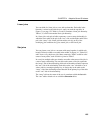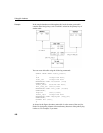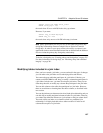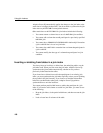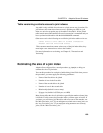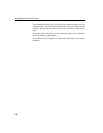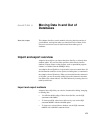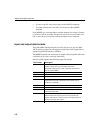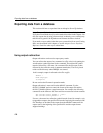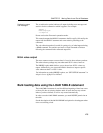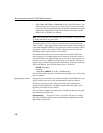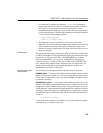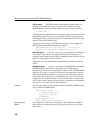
CHAPTER 5 Moving Data In and Out of Databases
173
Specifying an output format for Interactive SQL
You can set the DBISQL output format in three ways:
• Select Command → Options from the DBISQL menu bar, and then choose
an Output Format from the dropdown list. To make this the default output
format, click Permanent.
• Specify the DBISQL option,
OUTPUT_FORMAT, to set the default output
format.
For syntax details see the Adaptive Server IQ Reference Manual.
Permissions for modifying data
You can only execute data modification statements if you have the proper
permissions on the database tables you want to modify. The database
administrator and the owners of database objects use the GRANT and
REVOKE statements to decide who has access to which data modification
functions.
To insert data, you need INSERT permission for that table or view. To delete
data, you need DELETE permission for that table or view. To update data, you
need UPDATE permission. The DBA can insert into or delete from any table.
The owner of a table has INSERT, DELETE, and UPDATE permission on it.
Permissions can be granted to and revoked from individual users, groups, or
the public group. For more information on permissions, see Chapter 10,
“Managing User IDs and Permissions”.
Scheduling database updates
Multiple users can query a database table while one user inserts data into that
table. Multiple users can update the database concurrently, as long as they are
inserting into or deleting from different tables.
When you allow concurrent use of the database during updates, you pay a
penalty in performance and disk use. For an explanation of how Adaptive
Server IQ handles concurrency issues, see Chapter 8, “Transactions and
Versioning” For other suggestions on improving load performance, see
“Tuning bulk loading of data”



